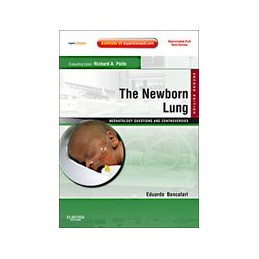- Obniżka


 Dostawa
Dostawa
Wybierz Paczkomat Inpost, Orlen Paczkę, DHL, DPD, Pocztę, email (dla ebooków). Kliknij po więcej
 Płatność
Płatność
Zapłać szybkim przelewem, kartą płatniczą lub za pobraniem. Kliknij po więcej szczegółów
 Zwroty
Zwroty
Jeżeli jesteś konsumentem możesz zwrócić towar w ciągu 14 dni*. Kliknij po więcej szczegółów
Opis
Section A: Normal and Abnormal Lung Development 1. Molecular Bases for Lung Development, Injury, and Repair
2. Genetic Influences in Lung Development and Injury 3. Perinatal Events and their Influence on Lung Development and Function
4. Hypoxia and Hyperoxia: Effects on the Newborn Pulmonary Circulation
5. The Role of Nitric Oxide in Lung Growth and Function Section B: Lung Injury - Bronchopulmonary Dysplasia 6. Prenatal and Postnatal Microbial Colonization and Respiratory Outcome in Preterm Infants
7. Influence of Nutrition on Neonatal Respiratory Outcomes
8. Patent Ductus Ateriosus and the Lung: Acute Effects and Long-Term Consequences 9. Role Of Stem Cells in Neonatal Lung Injury 10. New Developments In The Pathogenesis and Prevention Of Bronchopulmonary Dysplasia 11. Long-Term Pulmonary Outcome of Preterm Infants
Section C: Management of Respiratory Failure 12. Respiratory and Cardiovascular Support in the Delivery Room
13. Noninvasive Respiratory Support: An Alternative to Mechanical Ventilation in Preterm Infants 14. Surfactant Replacement: Present and Future 15. Oxygenation Targeting and Outcomes in Preterm Infants: The New Evidence 16. Hypoxemic Episodes in the Premature Infant: Causes, Consequences, and Management 17. Patient-Ventilator Interaction 18. Strategies for Limiting the Duration of Mechanical Ventilation 19. Automation of Respiratory Support 20. Management of the Infant with Congenital Diaphragmatic Hernia 21. Management of the Infant with Severe Pronchopulmonary Dysplasia
